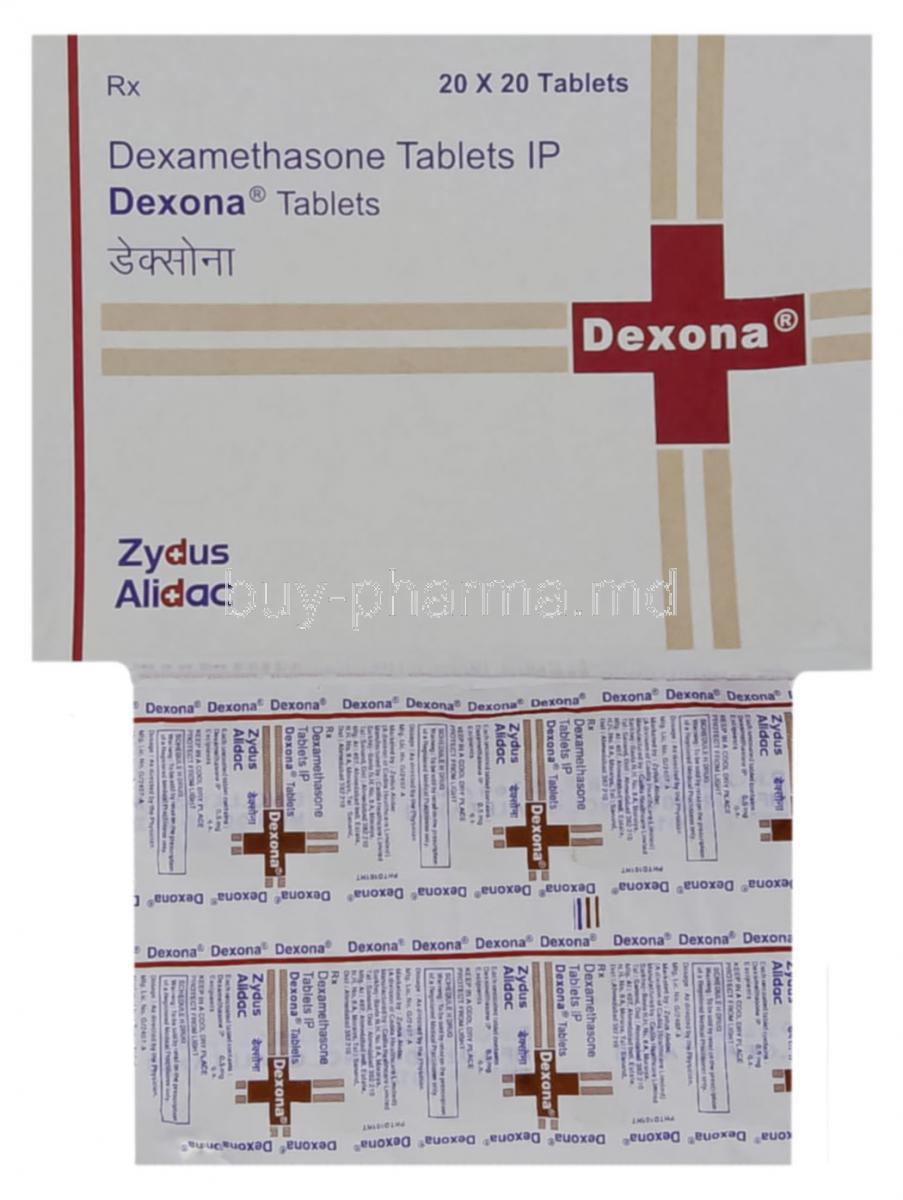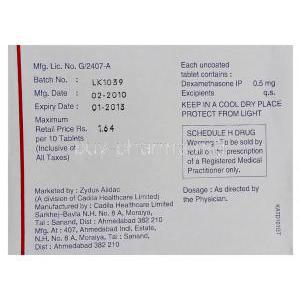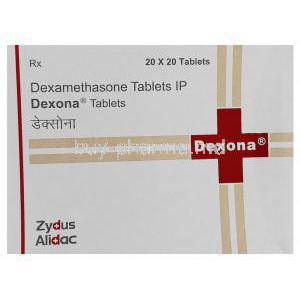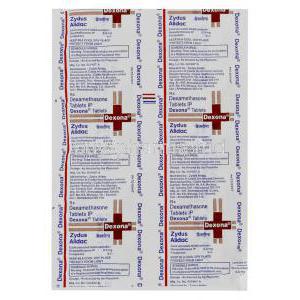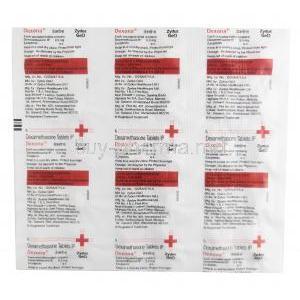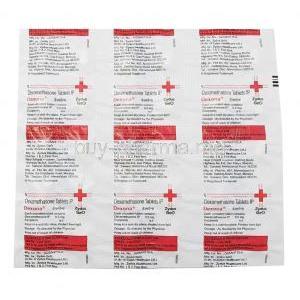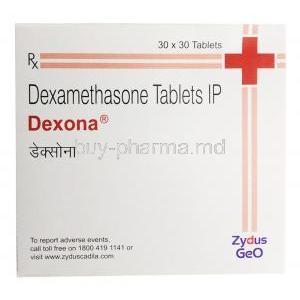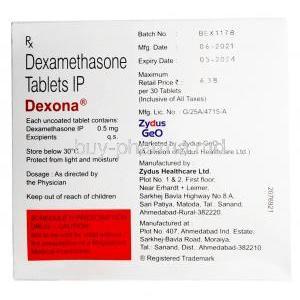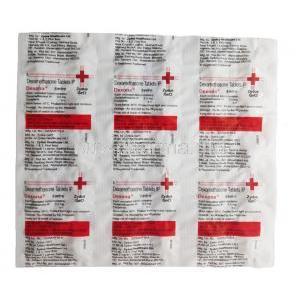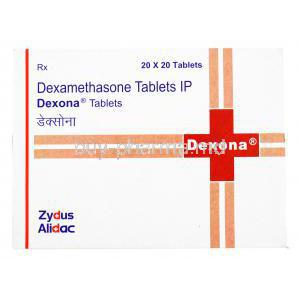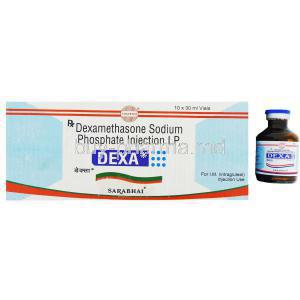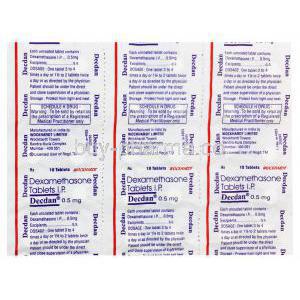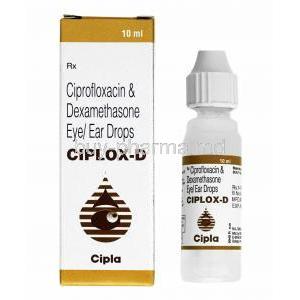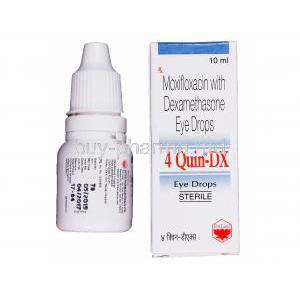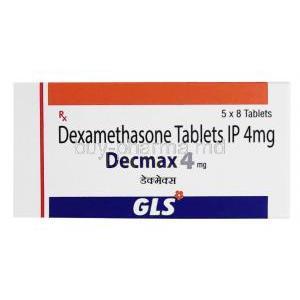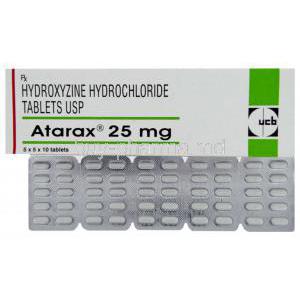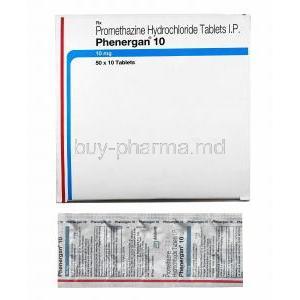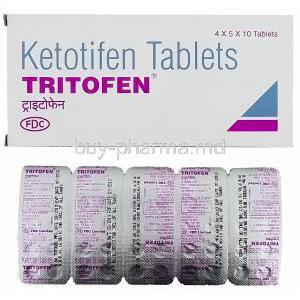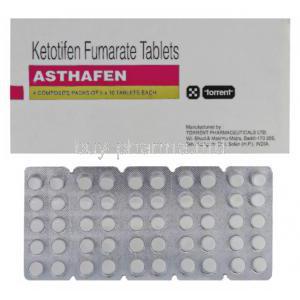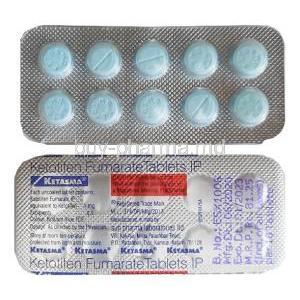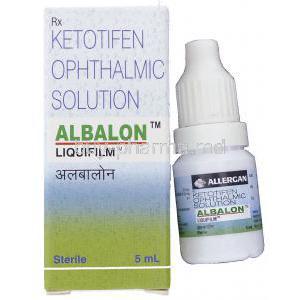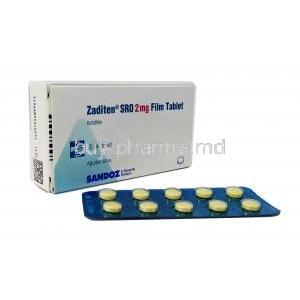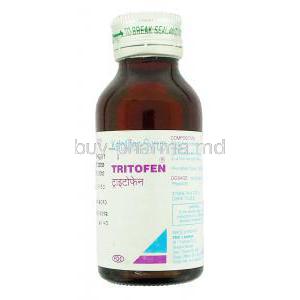Introduction
Overview of Dexona and its Active Ingredient Dexamethasone
Dexona is a pharmaceutical preparation containing dexamethasone, a potent synthetic glucocorticoid widely recognized for its strong anti-inflammatory and immunosuppressive actions. It is employed in the management of numerous acute and chronic conditions where immune modulation and inflammation control are essential.
Classification: Corticosteroid (Glucocorticoid) Medication
Dexamethasone belongs to the class of corticosteroids, specifically glucocorticoids, which mimic the activity of naturally occurring cortisol produced by the adrenal cortex. Its pharmacological profile is distinguished by long-lasting effects and minimal mineralocorticoid activity, making it highly effective in systemic therapy.
Importance in Clinical Medicine and Wide Therapeutic Applications
Dexona is considered a cornerstone in modern therapeutics. Its versatility allows it to be used across multiple specialties including pulmonology, dermatology, oncology, neurology, and endocrinology. From life-threatening emergencies such as cerebral edema to long-term management of autoimmune diseases, it remains an indispensable medication worldwide.
Composition and Formulations
Active Ingredient: Dexamethasone
The central component of Dexona is dexamethasone, a fluorinated corticosteroid with potent systemic action. Its efficacy lies in its ability to suppress exaggerated immune responses and inflammatory cascades.
Available Dosage Forms
- Tablets for oral administration
- Injections (intravenous, intramuscular) for rapid therapeutic effect
- Oral solutions for flexible dosing
- Eye and ear drops for localized inflammatory conditions
Brand Names and Generic Availability
Dexamethasone is marketed under various brand names including Dexona, Decadron, and others. Its wide generic availability ensures cost-effectiveness and global accessibility.
Mechanism of Action: How Dexona Works
Glucocorticoid Receptor Binding and Gene Regulation
Dexamethasone binds with high affinity to intracellular glucocorticoid receptors. This complex translocates to the cell nucleus, where it modulates transcription of genes responsible for inflammatory mediators, cytokines, and enzymes.
Anti-inflammatory and Immunosuppressive Properties
Through downregulation of pro-inflammatory molecules and upregulation of anti-inflammatory proteins, Dexona achieves significant suppression of inflammation. It reduces leukocyte migration, stabilizes lysosomal membranes, and prevents capillary permeability.
Effects on Metabolism, Immune System, and Central Nervous System
The medication alters carbohydrate, protein, and fat metabolism, often resulting in catabolic states during prolonged use. It modulates immune activity to control hyperactive responses, and within the central nervous system, it influences mood, cognition, and stress responses.
Medical Uses of Dexona (Approved Indications)
Inflammatory and Autoimmune Conditions
Rheumatoid arthritis, systemic lupus erythematosus, and vasculitis are managed effectively with Dexona due to its potent suppression of autoimmune activity.
Allergic Reactions and Severe Asthma
Used for acute allergic states, anaphylaxis adjunct therapy, and severe asthma exacerbations where rapid control of airway inflammation is critical.
Dermatological Conditions
Chronic eczema, psoriasis, and severe dermatitis benefit from corticosteroid therapy when topical measures fail.
Respiratory Diseases
Chronic obstructive pulmonary disease (COPD) exacerbations and severe COVID-19-related respiratory inflammation are key areas of use.
Gastrointestinal Conditions
Inflammatory bowel disease, ulcerative colitis, and Crohn’s disease are treated with Dexona to attenuate mucosal inflammation.
Hematological Disorders
Conditions such as leukemia, lymphoma, and aplastic anemia often include dexamethasone as part of chemotherapy or supportive care regimens.
Endocrine Disorders
Management of adrenal insufficiency and congenital adrenal hyperplasia utilizes dexamethasone as a glucocorticoid replacement.
Cerebral Edema and Increased Intracranial Pressure
Dexona rapidly reduces cerebral swelling associated with brain tumors, trauma, or surgical procedures.
Ophthalmic Disorders
Inflammatory eye conditions such as uveitis, allergic conjunctivitis, and keratitis are managed with topical dexamethasone formulations.
Off-Label and Specialized Uses
- Adjunct in chemotherapy-induced nausea and vomiting prevention
- Prophylaxis of altitude sickness in climbers and travelers
- Adjunctive treatment in septic shock and severe sepsis
- Neurological applications including multiple sclerosis flare-ups and spinal cord compression
- Pediatric endocrine and inflammatory conditions requiring systemic steroid intervention
Dosage and Administration
Standard Oral Dosing Guidelines for Adults
Typical doses vary between 0.5 mg to 9 mg daily, depending on the condition, with titration based on patient response and clinical judgment.
Intravenous and Intramuscular Administration
Used in emergencies or when oral intake is not feasible, providing rapid systemic action.
Tapering Schedules and Prevention of Withdrawal
Gradual dose reduction is mandatory after prolonged therapy to prevent adrenal crisis and withdrawal symptoms.
Special Dosing Considerations
Acute conditions require higher short-term doses, whereas chronic illnesses necessitate individualized maintenance therapy with the lowest effective dose.
Dosage Adjustment Based on Severity
Therapy is tailored depending on disease progression, comorbidities, and overall patient resilience.
Side Effects of Dexona
Common Side Effects
- Weight gain and enhanced appetite
- Sleep disturbances, mood fluctuations, irritability
- Gastrointestinal upset including indigestion and nausea
- Characteristic facial puffiness (moon face), acne, and oily skin
Serious Side Effects
- Suppression of immune defenses leading to higher infection risk
- Bone fragility, osteoporosis, and spontaneous fractures
- Glucose intolerance, hyperglycemia, and steroid-induced diabetes
- Hypertension and increased cardiovascular burden
- Endocrine abnormalities including Cushing’s syndrome and adrenal suppression
- Ophthalmological complications such as cataracts and glaucoma
Drug Interactions
Interaction with Anticoagulants
Dexamethasone can alter the pharmacodynamics of anticoagulants such as warfarin and heparin. This may result in unpredictable clotting times, either potentiating bleeding episodes or diminishing anticoagulant efficacy. Frequent monitoring of INR and clotting profiles is recommended when co-administered.
Interaction with Antidiabetic Medications
Glucocorticoids induce hyperglycemia by increasing gluconeogenesis and insulin resistance. Patients on oral antidiabetic agents or insulin may experience diminished glycemic control, necessitating careful titration of their antidiabetic regimen.
CYP3A4 Inhibitors and Inducers
Dexamethasone is metabolized through the CYP3A4 pathway. Concomitant use with inhibitors such as ketoconazole or erythromycin may increase systemic steroid levels and adverse effects. Conversely, inducers like rifampicin and phenytoin can reduce its plasma concentration, impairing therapeutic efficacy.
NSAIDs and Increased Gastrointestinal Risk
Combined use with NSAIDs heightens the risk of peptic ulceration, mucosal erosion, and gastrointestinal hemorrhage. Protective measures such as proton pump inhibitors may be warranted for high-risk patients.
Vaccines and Reduced Efficacy
Immunosuppressive properties of dexamethasone can attenuate vaccine response. Live vaccines should generally be avoided during therapy, while inactivated vaccines may yield suboptimal immunity.
Contraindications
- Hypersensitivity to dexamethasone or other corticosteroids
- Presence of untreated systemic fungal infections or active tuberculosis
- Uncontrolled psychiatric illness without supervision
- Active peptic ulcer disease unless accompanied by protective therapy
Warnings and Important Precautions
Risks of Long-Term Corticosteroid Therapy
Extended administration is associated with osteoporosis, cataracts, hypertension, and immune suppression. Vigilant follow-up is crucial to mitigate cumulative harm.
Gradual Discontinuation to Prevent Adrenal Crisis
Sudden cessation after prolonged use can precipitate acute adrenal insufficiency. Tapering schedules are mandatory to allow endogenous cortisol production to recover.
Monitoring of Clinical Parameters
- Blood glucose to detect steroid-induced diabetes
- Blood pressure to monitor hypertensive effects
- Bone density scans to assess osteoporosis risk
Risks in Immunocompromised Patients
Immunosuppressive action predisposes patients to opportunistic infections. Latent infections such as tuberculosis or herpes may reactivate under therapy.
Need for Regular Ophthalmic and Laboratory Evaluations
Periodic eye examinations and laboratory surveillance help identify complications such as glaucoma, cataracts, electrolyte imbalance, and hepatic dysfunction at an early stage.
Careful Administration in Special Populations
Elderly Patients
The geriatric population is particularly vulnerable to bone fragility, confusion, and falls. Dose adjustment and cautious monitoring are essential to minimize harm.
Pregnant Women and Nursing Mothers
Administration should be considered only if maternal benefits clearly outweigh fetal risks. Prolonged use may impair intrauterine growth. Small amounts of dexamethasone pass into breast milk, potentially exposing infants to hormonal suppression and growth retardation.
Children and Adolescents
Chronic therapy in younger patients can lead to growth suppression and hypothalamic-pituitary-adrenal axis dysfunction. Regular assessment of height, weight, and endocrine function is necessary to safeguard normal development.
Overdose and Emergency Management
Symptoms of Overdose
- Marked hyperglycemia and glucosuria
- Electrolyte imbalances such as hypokalemia
- Severe hypertension and fluid retention
Emergency Interventions
Overdose management is largely supportive. Fluid and electrolyte balance must be restored, while blood glucose requires close regulation. Gradual tapering may be necessary if high-dose exposure persists.
Storage and Handling Precautions
Storage Conditions
Dexamethasone products should be stored below 25°C, away from direct light and excessive moisture. Eye and ear drops must be tightly capped to maintain sterility.
Safe Handling of Injectable Forms
Parenteral formulations require aseptic technique during administration. Single-use vials should not be reused to prevent contamination.
Shelf Life and Expiration Guidelines
Each formulation carries a defined shelf life, typically 24–36 months when unopened. Once opened, eye and ear drops often have a shorter usable duration, usually around 28 days.
Disposal Instructions
Expired or unused medication should be discarded in compliance with pharmaceutical waste protocols. Household disposal is discouraged to avoid environmental contamination and accidental exposure.

